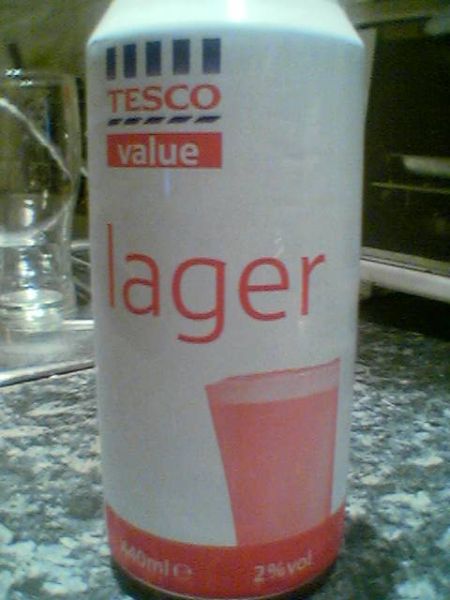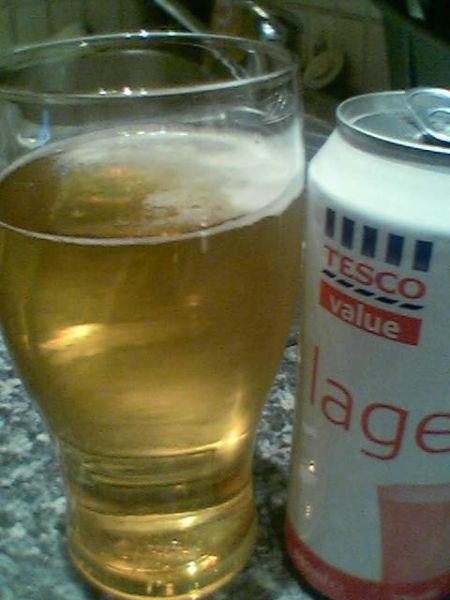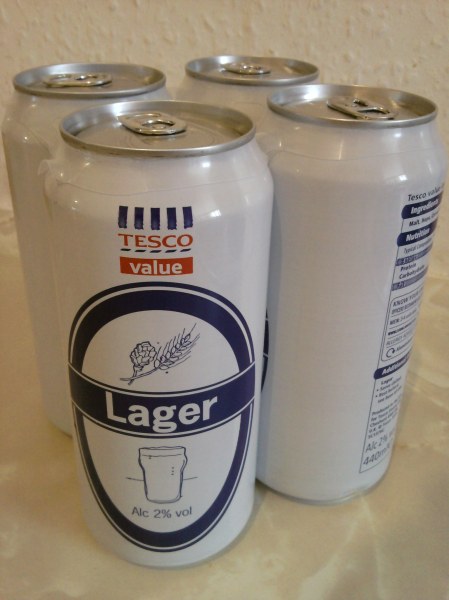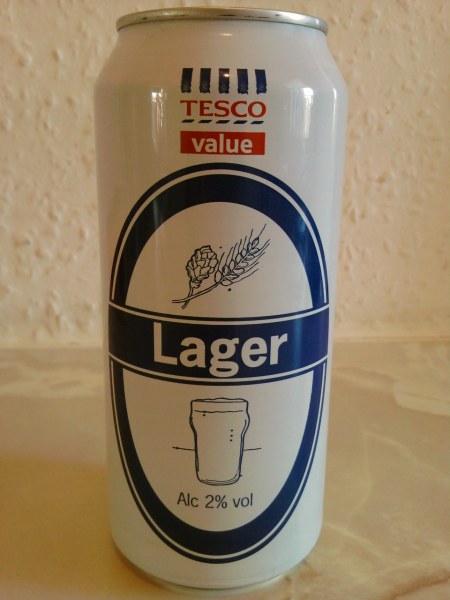IT has been a while since the last time I tried an eccentric British ale. And that’s a shame, because my favourite ales are British, and brewed with bananas, polar bears and mermaids. So it’s with some delight that I have here a bottle of Ruddles Rhubarb.
The bottle is transparent, so we get a glimpse of the strange amber liquid within. And the bottle looks familiar. There’s a crown and the date 1799 embossed on the shoulder. Where have I seen that before?
The neck label deserves some attention.
The top of it shows that this is an award winner. Apparently a “best beer” in the Tesco “Drinks Awards”. Other beers and ales I’ve tried that have won the same thing have been at least very good. This bodes will for Ruddles Rhubarb.
The rest of the neck label gives us a surprising amount of information about the drink itself. They start with describing it as “An English Ale with a vanilla aroma…”. Vanilla is a new beer smell for me. I’m looking forward to it already.
Then they go on to say that it “leads to a rich flavour” balancing the “refreshing sweetness of rhubarb with the lingering bitterness of the distinctive Brambling Cross hop.” Where can I begin with all this? Well rich flavours are always welcome. I’d never have described rhubarb as having “refreshing sweetness”, but I’m thrilled to see this root vegetable making an appearance in a beer at last. Then there’s the bitterness that the Brambling Cross hops will bring. And that’s another new one for me. I don’t recall seeing that type of hop in any other beer I’ve tried to date. All in all, this is promising to be original, complex and fascinating. A flying start for Ruddles Rhubard.
Lastly from the neck label, is the alcoholic volume. And you’ve got to look very hard to see it as it’s poorly contrasting text. Some squinting reveals the volume to be 4.7%. Not as high as I’d like, but not bad.
With so much on the neck label, there’s not much to put on the front label.
It reminds me that this is just one of the Ruddles brand of brews. And I’d be very interested in seeing what else they have to offer. Most of the label is taken by the logo, which is a huge horseshoe shaped thing. It gives off all the right rural signals. Something reinforced by the slogan “Serious Country Ale”. As a country boy myself, I can’t argue with that.
Over to the back label, and there’s some reading to do.
The bulk of the writing starts by telling us that Ruddles‘ Ales originally came from Rutland. An English county with the dubious honour of being the country’s smallest. Then we’re told about the horseshoe we saw on the front label. It turns out that this has been the symbol of Rutland for more than five-hundred years. Lastly, they give us the old rumour that royalty or peers of the realm had to give the lord of the manor a horseshoe when they passed through the town of Oakham. Does that mean they have to leave a spare tire when then pass through it today?
After that, things get all rather familiar again. The message to drink sensibly by taking as much care drinking it as they do making it is good. As are the little symbols informing us that it contains malted barley and that this is “beer to die for”. But all are familiar. Which big brewing parent is it from?
For those that count such things, the UK units of alcohol are listed. This 500 millilitre bottle has 2.4 UK units of alcohol. Frustrating because you can’t have another one of these bottles without going over the recommended limit.
We still haven’t answered the question of where this comes from. And why so much of it looks familiar. Maybe the answer will be in the tiny block of text in the corner of the label. And yes, it is. The address of Ruddles Brewing is the English town of Bury St. Edmunds. Isn’t that the home town of regional brewing giant Greene King? Time to check the website they give for some confirmation on that: www.ruddles.co.uk. Within moments, and a few clicks, my suspicions are confirmed. Ruddles is part of the Greene King. And according to this page of their website (http://www.greeneking.co.uk/brands_and_brewing.htm), I will now have tried at least one bottle from all of their brands. Hooray.
Now to answer the most important questions of all. And the reason for this entire post. Is Ruddles Rhubarb any good? What does it taste like? And does it deserve the Tesco Best Beer award? Time to find out.
In the glass, it’s easier to see the colour. Which is an amber-ish brown. The head is good. Initially filling my pint glass, it levels out to a consistent layer of foam, sitting atop the ale.
Pouring it out of the bottle, the smell that hit me reminded me a lot of those other Greene King ales, Abbot Ale and Old Speckled Hen. But closer sniffing reveals what they promised all along… vanilla. Yes, that is what this ale smells of. A tingly, rich smell of vanilla. Unusual and outstanding.
A couple of gulps reveals the taste to be as complex as promised too. The label described tastes of refreshing rhubarb and lingering hoppy bitterness. Not being a rhubarb fan myself, it’s hard to know if that’s what I’m tasting. What I am getting is a first taste that’s slightly sweet and vegetably. And that’s followed by the biggest contrast in aftertastes I’ve ever experienced. After the lightness of the first taste, you’re hit by an onslaught of lingering bitterness. That would be the Brambling Cross hops that they mentioned at work. It is quite the most intense and sudden flavour changes and bitterness I’ve experienced. No wander you don’t see that type of hops very often.
Things I like about Ruddles Rhubarb are numerous. The vanilla smell is something else. The combination of tastes and flavours is unique. That means it’s distinctive and has more character than Boris Johnson. I like the fact that it takes massive risks with big, bold flavours instead of catering for the easily offended mass market. It isn’t very gassy. And the quality is evidenced by surprising drinkability considering the strength and flavour. At least once you’ve grown used to it.
With ale that takes such risks, there’s inevitably going to be downsides. And the flavour is as good a place to start as any. With the first few gulps, my initial reaction was “what the hell is in this drink?” And that is purely down to the intense bitterness that follows so quickly and unexpectedly from the light flavour the precedes it. I got used to it by the half-way mark, but it’s going to be too much for a lot of people. It was nearly too much for me. That makes this not one for an easy and totally enjoyable and drinkable experience.
How can I try to sum up Ruddles Rhubarb? The blend of smells and flavours is unlike anything else I’ve ever tried. And probably will ever try ever again. The flavours are bold and adventurous, with the biggest change in taste and aftertaste I’ve ever tasted. I’m amazed that such an unusual ale won the Tesco award that it did.
This is one for people who like to be challenged. Something for beer connoisseurs. Or is it? It took a while, but I grew to thoroughly like it. If you are at all interested in interesting and unusual beers, I highly recommend that you try this exceptional ale. If you can find it. For me, this is one of those ales you experience rather than simply drink.
Rating: 4.15
Have you tried Ruddles Rhubarb? What did you think of it?
Leave your opinions, thoughts, ideas, suggestions and recommendations here please. I look forward to hearing what you thought of this one.




















